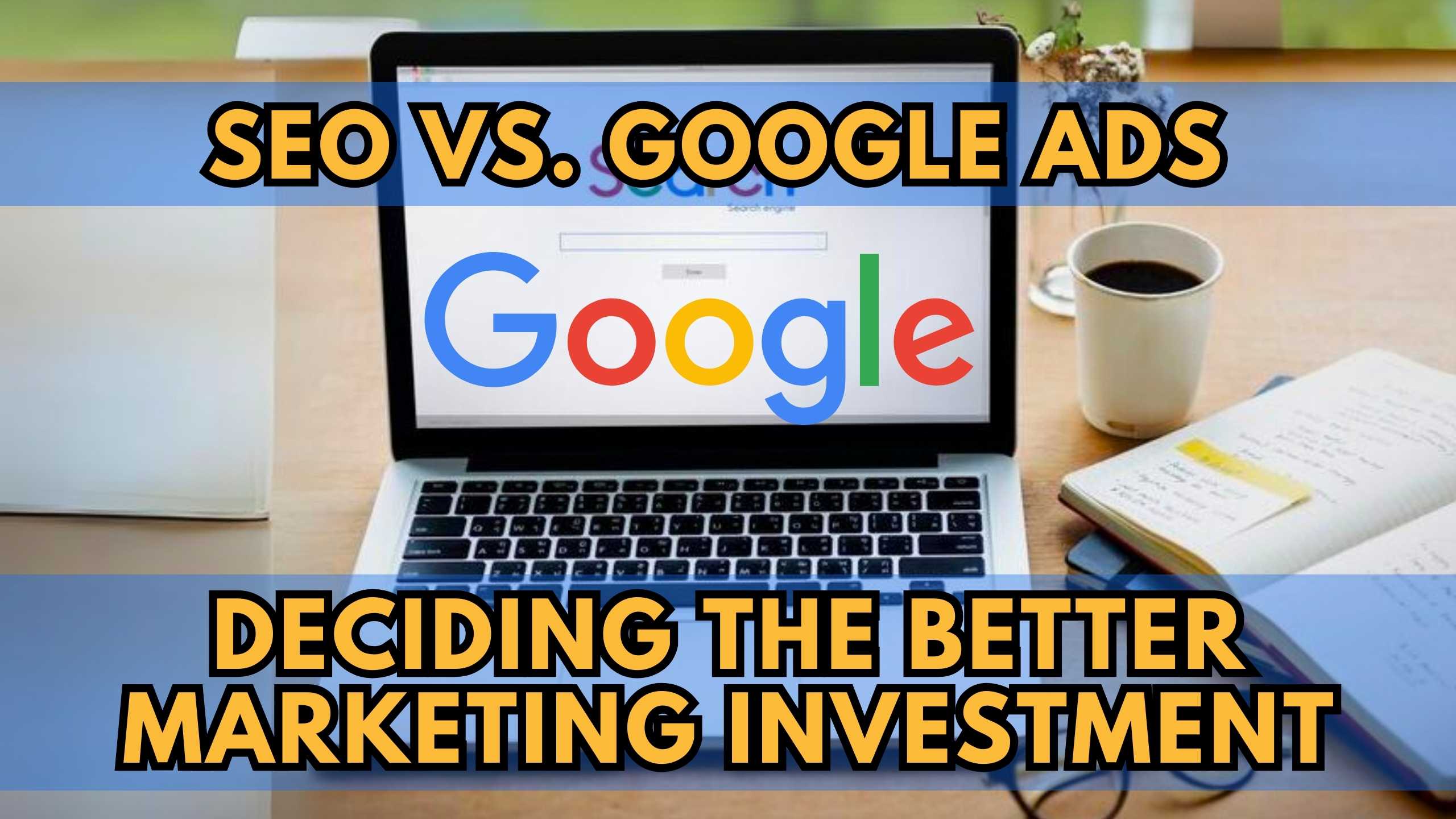SEO vs. Google Ads: Deciding the Better Marketing Investment
- Conversational Marketing Software SEO Software Affiliate Marketing Software Marketing Tools


SEO vs. Google Ads: Deciding the Better Marketing Investment
Search engine optimization (SEO) and Google Ads are two popular digital marketing channels companies use to drive traffic to their websites. But which one is the better investment? Here we outline key factors to consider when deciding between focusing efforts on SEO or Google Ads.
Cost Comparison
One of the biggest considerations is cost. SEO has an upfront cost to optimize content and pages for search engines. But once that foundation is built, organic traffic is free. Google Ads is pay-per-click (PPC), meaning you only pay when someone clicks your ad. PPC costs add up over time but can be controlled by setting daily budgets.
SEO costs tend to pay off long-term by delivering consistent traffic. Google Ads offer more flexibility to turn off campaigns when needed. The best approach is aligning budget to business goals – higher margins allow for more Google Ads spend while lower margins warrant an SEO focus.
Traffic Quality
Traffic source also impacts quality. SEO visitors often have higher intent, conversions, and retention since they proactively searched for content. Google Ads can target more broadly to reach new audiences, but this traffic converts less overall.
An effective strategy is using both channels for balance – SEO to convert highly interested traffic and Google Ads to attract new visitors. Adjust budgets between the two based on overall conversion performance.
Results Control
With SEO, search engines control results and algorithm updates can greatly impact rankings. Companies must continually optimize pages and content. Google Ads puts control in a brand’s hands to manage campaigns, keywords, placements and more to drive traffic.
Having an SEO foundation helps maintain baseline organic traffic. Layering on Google Ads allows control to increase traffic to key pages. Striking this balance enables adjusting paid spend up and down as needed.
Ongoing Management Needs
SEO requires ongoing effort to create content, optimize technical elements on pages, build links and track rankings. Google Ads needs continuous campaign monitoring, keyword research, ad testing and bid adjustments to drive optimal traffic.
Having dedicated internal resources or outsourcing to an agency for management is important for either channel – and both require significant expertise. Automated tools can supplement efforts to maximize reach while controlling costs.
Recommended Saas Products:
- Ahrefs provides SEO tools to research keywords, track website rankings, and optimize content. This helps maximize SEO efforts for free organic traffic.
- Optmyzr offers PPC campaign management tools to optimize Google Ads budgets, strategy and performance. This helps control costs and maximize ROI.
- Moz provides SEO tools for optimizing pages, monitoring rankings and staying updated on algorithm changes. This helps maintain visibility in organic results.
- WordStream, offers Google Ads bid management tools, campaign tracking and keyword research. This enables optimizing PPC campaigns and control over paid traffic sources.
- Hotjar provides user analytics tools and heatmaps to understand visitor behavior. This helps assess SEO and Google Ads traffic quality.
- Lucky Orange offers live visitor recordings, analytics and surveys to optimize conversions. This provides insights to improve both SEO and Google Ads.
Conclusion
In summary, SEO and Google Ads serve different but complementary purposes. SEO delivers targeted, high converting traffic that grows over time. Google Ads provide flexible visibility to attract new visitors. Optimizing both channels is ideal to achieve balance in cost, traffic quality and control – with the right management resources and tools supporting both.
Assessing business goals and margins allows setting an appropriate budget split. It’s not an either/or decision between SEO and Google Ads – the two can work together to drive growth. Ongoing optimization, tracking and management are critical to maximizing the return across both channels.
Save Time and Money Managing Your SaaS Subscriptions
Managing SEO, Google Ads and other software subscriptions takes significant effort. Subscribed.fyi makes it easy to track expenses, find deals and cancel or renegotiate SaaS tools – saving $100K+ a year. Sign up now and stop overpaying and take control by centralizing SaaS management with Subscribed.fyi. Optimize budgets so you can allocate more to high-performing channels like SEO and Google Ads effortlessly.
Relevant Links:





